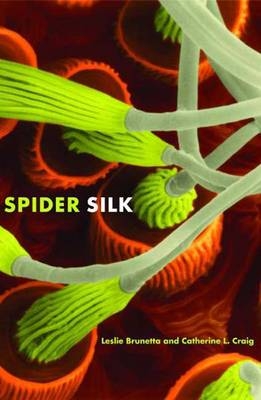
Spider Silk
Evolution and 400 Million Years of Spinning, Waiting, Snagging, and Mating
Seiten
2010
Yale University Press (Verlag)
978-0-300-14922-7 (ISBN)
Yale University Press (Verlag)
978-0-300-14922-7 (ISBN)
- Titel ist leider vergriffen;
keine Neuauflage - Artikel merken
Tells the story of how spiders evolved over 400 million years to add silks and uses for silk to their survival 'toolkit'. This book describes the trials and triumphs of spiders as they use silk to negotiate an ever-changing environment, and shows how natural selection acts at the genetic level and as individuals struggle for survival.
Spiders, objects of eternal human fascination, are found in many places: on the ground, in the air, and even under water. Leslie Brunetta and Catherine Craig have teamed up to produce a substantive yet entertaining book for anyone who has ever wondered, as a spider rappelled out of reach on a line of silk, 'How do they do that?' The orb web, that iconic wheel-shaped web most of us associate with spiders, contains at least four different silk proteins, each performing a different function and all meshing together to create a fly-catching machine that has amazed and inspired humans through the ages. Brunetta and Craig tell the intriguing story of how spiders evolved over 400 million years to add new silks and new uses for silk to their survival 'toolkit' and, in the telling, take readers far beyond the orb. The authors describe the trials and triumphs of spiders as they use silk to negotiate an ever-changing environment, and they show how natural selection acts at the genetic level and as individuals struggle for survival.
Spiders, objects of eternal human fascination, are found in many places: on the ground, in the air, and even under water. Leslie Brunetta and Catherine Craig have teamed up to produce a substantive yet entertaining book for anyone who has ever wondered, as a spider rappelled out of reach on a line of silk, 'How do they do that?' The orb web, that iconic wheel-shaped web most of us associate with spiders, contains at least four different silk proteins, each performing a different function and all meshing together to create a fly-catching machine that has amazed and inspired humans through the ages. Brunetta and Craig tell the intriguing story of how spiders evolved over 400 million years to add new silks and new uses for silk to their survival 'toolkit' and, in the telling, take readers far beyond the orb. The authors describe the trials and triumphs of spiders as they use silk to negotiate an ever-changing environment, and they show how natural selection acts at the genetic level and as individuals struggle for survival.
Leslie Brunetta is a freelance writer whose articles have appeared in the New York Times, Technology Review, and the Princeton Alumni Weekly as well as on NPR and elsewhere. Catherine L. Craig, author of the monograph Siderwebs and Silk, is an internationally recognized evolutionary biologist, arachnologist, and authority on silk.
| Zusatzinfo | 37 black-&-white illustrations & 12 colour images |
|---|---|
| Sprache | englisch |
| Maße | 156 x 235 mm |
| Themenwelt | Sachbuch/Ratgeber ► Natur / Technik |
| Naturwissenschaften ► Biologie ► Zoologie | |
| ISBN-10 | 0-300-14922-0 / 0300149220 |
| ISBN-13 | 978-0-300-14922-7 / 9780300149227 |
| Zustand | Neuware |
| Haben Sie eine Frage zum Produkt? |
Mehr entdecken
aus dem Bereich
aus dem Bereich


